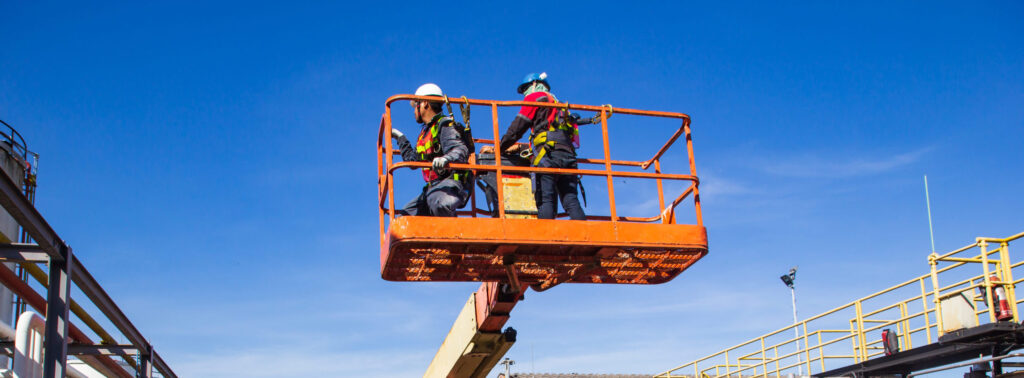Online Aerial(Scissor/Boom) Lift Training
- WHMIS 2015
- Fall Protection
- Transportation Dangerous Goods
- Lift Truck / Forklift
- Aerial Lift
- Lockout / Tagout
- Fire Safety
- Dental WHMIS
- Confined Space
- H2S
- Ladder Safety
- Due Diligence
- Office Ergonomics
- Manual Material Handling
- Workplace Violence & Harassment
- Incident Investigation
- Workplace Inspections
- Worker Safety Awareness
- Supervisor Safety Awareness
REGISTRATION – Individual cost of this online Aerial Lift training program is only $125.00
To register online for Online Aerial Lift Training, simply use the convenient online shopping cart by selecting the adjacent “BUY NOW” icon. Then, you will be directed to our training catalogue. Click on the course you would like to take and then follow the instructions.
You can register individually or as a company and create your own company Learning Management System (LMS).
If you have any questions, please give us a shout at 416-283-7233 or Canada-wide toll free at 1-855-260-7233
Register – New Customer :
Returning Customer, Sign-in Link :

Aerial Lift Training Program
Construction workers, industry professionals, and warehouse operators typically use aerial lifting devices (Elevating Work Platform, Scissor Lift, Boom Lift).
However, their versatility and safety features allows to utilize the devices in almost any environment.
Our Aerial Lift Training Program will primarily focus on the safe operation of self-propelled elevated work platforms and self-propelled boom-supported elevated work platforms.
You will print a certificate once you successfully complete the online course.
Additionally, a competent individual must sign it in the space provided, verifying that they have completed a hands-on practical evaluation within your facility.
Modules
- Hazard Identification
- Devices and Operating Controls
- Pre Operational Checks
- Platform Positioning
- Park Position
View an Online AERIAL LIFT Training demo (click on start button below)
Alberta Legislation
Occupational Health and Safety Code 2009 – Elevating Platforms and Aerial Devices
Section 346 – Worker safety
An employer must ensure that a worker is not travelling in a basket, bucket, platform, or other elevated or aerial device that is moving on a road or work site if road conditions, traffic, overhead wires, cables, or other obstructions create a danger to the worker.
Similarly, a person must not travel in a basket, bucket, platform, or other elevated or aerial device that is moving on a road or work site if road conditions, traffic, overhead wires, cables, or other obstructions create a danger to the person ERTA.
British Columbia Legislation
Occupational Health and Safety Regulations – Part 16
Section 16.4 – Competency of Operators
Manitoba Legislation
Workplace Health and Safety Regulation 217/2006
Section 28.2 – Safe Work Procedures
New Brunswick Legislation
REGULATION 91-191 – Elevating Work Platforms – 2001-33
Section 130
“An employer must ensure that a worker is not travelling in a basket, bucket, platform, or other elevated or aerial device that is moving on a road or work site if road conditions, traffic, overhead wires, cables, or other obstructions create a danger to the worker. Furthermore, a person must not travel in a basket, bucket, platform, or other elevated or aerial device that is moving on a road or work site if road conditions, traffic, overhead wires, cables, or other obstructions create a danger to the person ERTA.”
REGULATION 70/09
Section 252 – Competency and Testing Operators
Nova Scotia Legislation
Fall Protection and Scaffolding Regulations Part I
Section 36 – Power Operated Elevating Work Platforms
Ontario Legislation
Regulation 851, Industrial Establishments – Section 51(2)
Prince Edward Island Legislation
Occupational Health and Safety General Regulations
Part 33 – Powered Mobile Equipment
5. An employer or contractor shall ensure that:
(a) a worker who operates an aerial device or elevating work platform is trained to operate the device or platform safely; and
(b) furthermore, the training includes the manufacturer’s instructions and recommendations, the load limitations, the proper use of all controls, and any limitations on the surfaces on which the device or platform is designed to be used.



